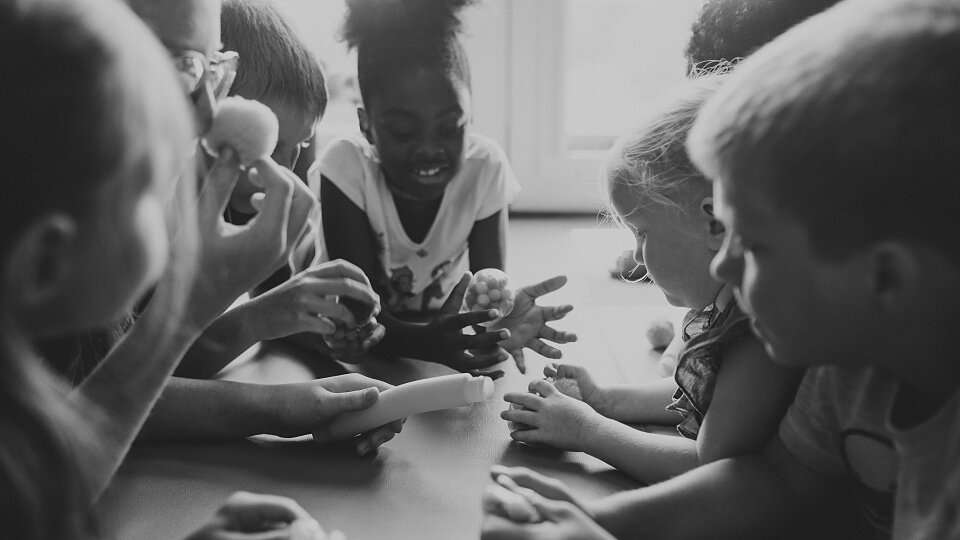My Favorite Things: Sensory Edition
October is National Sensory Processing Awareness Month (yay neurodivergence!), so I decided to take a minute to talk about my favorite go-to sensory items for kiddos with sensory processing challenges. At first, I thought I would highlight my top five items, but not only are there WAY too many amazing sensory items to narrow it down to just five, I thought sharing items that are effective for each of the eight senses would be better.
But first, here’s a quick recap... Sensory processing is the brain’s ability to interpret sensory information and appropriately respond to that information. We all have sensory needs, and we respond to stimuli in different ways every day. If our sensory needs start to affect our daily life, that’s when sensory needs become a challenge, and this is often referred to as Sensory Processing Disorder (SPD). Kiddos from hard places tend to develop sensory sensitivities because of the way trauma traps their brains in a state of hyperawareness, and this affects their ability to respond to sensory stimuli “appropriately."
“Pioneering occupational therapist and neuroscientist A. Jean Ayres, PhD, likened SPD to a neurological ‘traffic jam’ that prevents certain parts of the brain from receiving the information needed to interpret sensory information correctly.”
~ SPD Foundation
As for the senses, we all know the big five — Sight, Sound, Taste, Smell, and Touch. In sensory speak, they are: Visual, Auditory, Gustatory/Oral, Olfactory, and Tactile. We also have what are referred to as the “hidden senses”: Proprioception (body awareness), Vestibular (balance and movement), and the trickiest of the hidden senses, Interoception (internal body needs, e.g., thirst, hunger).
Kiddos with higher sensory needs can have sensory challenges in any of the eight sensory systems, and they often struggle with one or more of these systems. The most common types of sensory processing disorders are over-responsive, under-responsive, and sensory seeking. All the items I’m listing here help address a kiddo's unique sensory needs, whether they over respond, under respond, or crave sensory input.
Now, onto the fun stuff!
Visual:
For kiddos with sensory challenges, or even just kiddos from hard places, being able to see what is expected of them is extremely helpful. Using a visual countdown timer or a liquid timer can help make difficult transitions a little easier. A liquid timer is also excellent for helping a kiddo calm their body and reset their sensory system.
Auditory:
The number one thing I recommend for kiddos with auditory sensitivities is a pair of noise reduction headphones, which block out loud or surprising sounds. They come in a variety of colors and designs to make kids more excited to wear them. And if you have an older child or a teen who doesn’t want the over-the-ear style, there are some great earplugs that are extremely effective for blocking out auditory input. My eight-year-old son uses his Vibes earplugs every day in the cafeteria, and he loves them.
Gustatory/Oral:
Kiddos with these sensitivities may struggle with certain flavors or textures, or they show a need for oral sensory input. Many kiddos with high oral sensory needs will chew on non-food items trying to meet these needs. There are a number of options to address these types of sensory challenges but chew necklaces or chew tubes are most common. They are made of a food grade silicone and are designed to give kids the oral input their bodies need.
Olfactory:
Anything that puts off an aroma is helpful in meeting olfactory sensory needs, like having your kiddo smell the spices in your spice cabinet or diffusing essential oils in the home. One item that is great for this, and one that also meets a tactile sensory need, is scented playdough or kinetic sand. The more sensory systems you can incorporate, the better!
Tactile:
Kinetic Sand is fantastic for sensory play. It acts similarly to wet sand since it can be formed and molded, but it doesn’t dry out. It gives input to kiddos who either seek sensory input or who are under-responsive to it, and it helps over-responsive kiddos get used to different textures. A great game to play with kinetic sand is to hide little toys in the sand and have your child dig the items out like it’s a treasure hunt! Orbeez, a.k.a. water beads, is another fabulous tactile sensory item (as long as your kiddo doesn’t have a sensitivity to slimy textures).
Proprioception:
For kiddos who need calming, regulating input, proprioception is where it’s at. There are multiple ways to provide proprioceptive input, but one of the most common ways is to use weighted items, such as weighted blankets, weighted lap pads, and even weighted stuffed animals. A weighted lap pad is a great item to send to school if they struggle with staying focused. It will give them calming input while they’re sitting at their desk!
Vestibular:
Vestibular input is all about movement. This sense is triggered by receptors in the inner ear that tell your body the direction it’s going and how fast it’s moving. Kids with vestibular sensory needs really like jumping, swinging, and hanging upside down, so a great item to have at home is a mini trampoline. This will give your child repetitive movement that can be extremely regulating, and for kiddos who tend to be under-responsive, it can also be alerting. Don’t have room for a trampoline? Try a Bosu ball!
Interoception:
Items that provide input for the interoception sense can be a little trickier because it truly is a hidden sense. Sometimes it’s hard to figure out what our bodies need, especially if we have sensory systems that act a little wonky, so things that help here are based on mindfulness. Activities like yoga and meditation can help your kiddo connect with their body, which in turn will help them identify their needs. Teaching your kiddos deep breathing techniques is also a great way to practice mindfulness. These breathing mazes and this book on breathing techniques are great for showing your child how to connect with their breath and stay in the moment. I also love these mindfulness cards, which our family uses when our sensory kiddos are struggling to fall asleep.
If you have questions about any of the items highlighted here, or if you’ve been reading this and started to wonder if your kiddo may have sensory sensitivities, Project SOOTHe can help! All the items I mentioned, as well as countless more, are things Project SOOTHe can provide to help meet your child’s sensory needs. Reach out to me through the Project SOOTHe request form or at rachel@fostervillageaustin.org, and we can figure out how to best support you and your child.
We’ve got your back.


